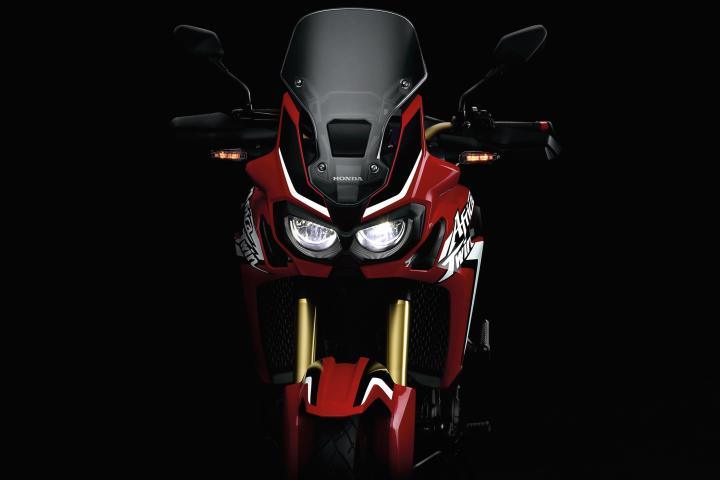
That is about to change in a very big way (emphasis on big).
Honda has announced they are bringing a new bike, the Africa Twin 1000 (proper model number: CRF1000L) and it looks like it will take on luxe dual sports like the Ducati Mutlistrada in a fast-growing market.
Euro-market riders and others have been buying up 650/750cc Africa Twins and Transalp models for decades now while U.S. riders have made do with the stone-age (but highly capable) XL650L since the 1980s.
Details were scant in the press release, which only included two teaser images and no specific specifications outside of displacement, but one noteworthy mention is the new Africa Twin will be available with Honda’s high-tech dual-clutch automatic gearbox as an option.
Honda says its DCT will be re-tuned for the big dualie — a good thing since this is a bike that will likely be spending at least some time in the dirt. Expect multiple ride modes and manual shifting (via handlebar buttons) as part of the DCT package.

Not much can be gleaned from the pair of images in the release, which appear to show the AT will be more along the lines of the tech-heavy and civilized Ducati Multistrada than the more hard-core BMW G/S series or the KTM Adventure machines.
Photos show a lot of plastic bodywork and a substantial fly screen, along with gold-colored forks and a thinnish, motocross style seat. Handguards appear on the grips and twin headlights – likely LED types – light the way forward. The engine is a P-Twin as expected. Other than that, not much to go on for now. We have emails and bribery offers in to Honda for more information.
However the Africa Twin 1000 turns out, whether it’s more pavement-oriented or retains the harder edge of the True Adventure prototype shown at EICMA last November, it’s long, long overdue, at least in the States. We can’t wait to try it out.
Editors' Recommendations
- Honda Clarity Electric gets unplugged, won’t return for new model year
- Honda’s new airbag functions like a baseball catcher’s mitt


